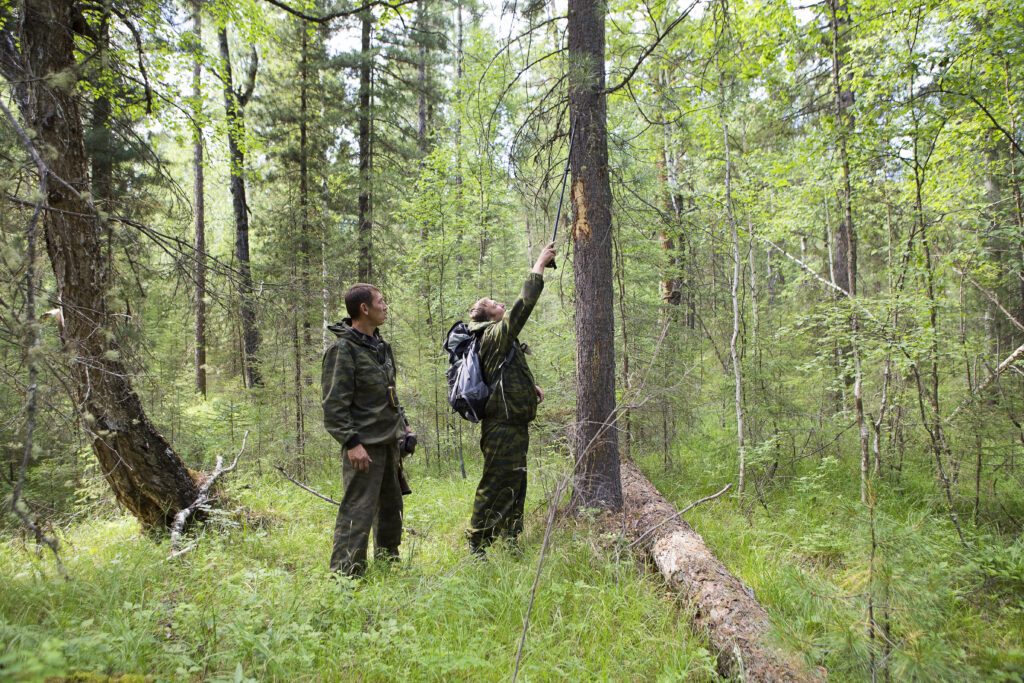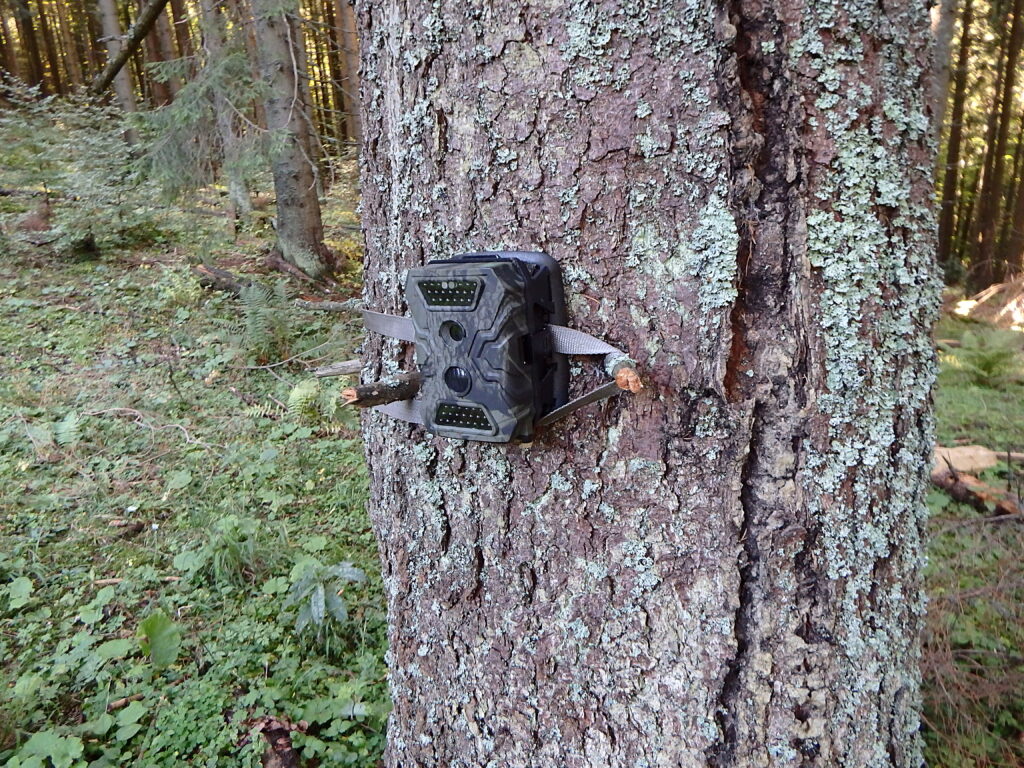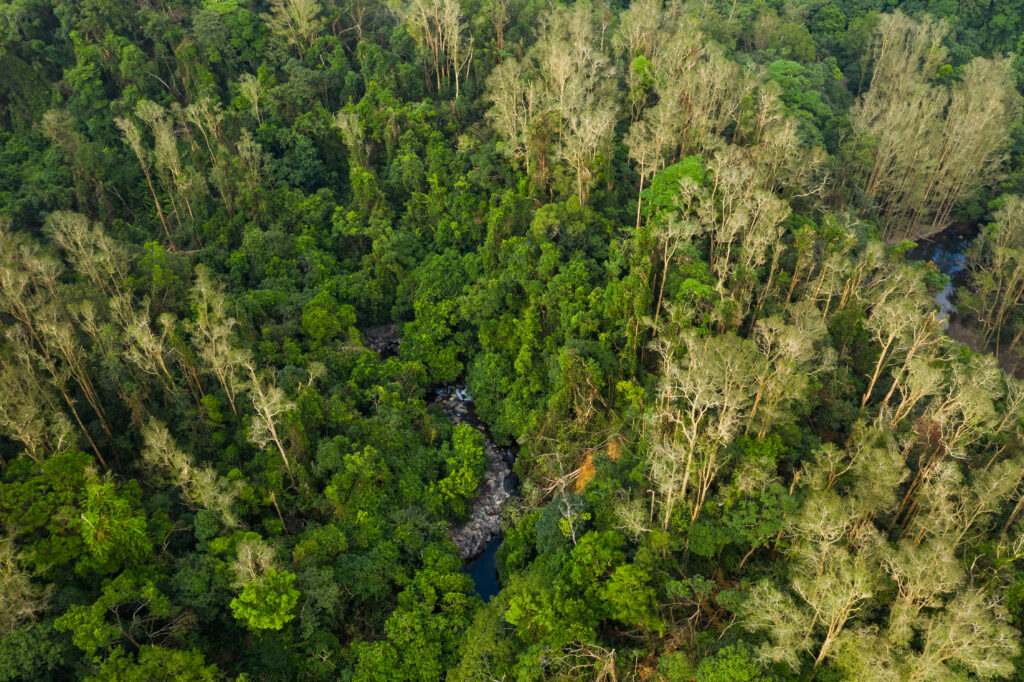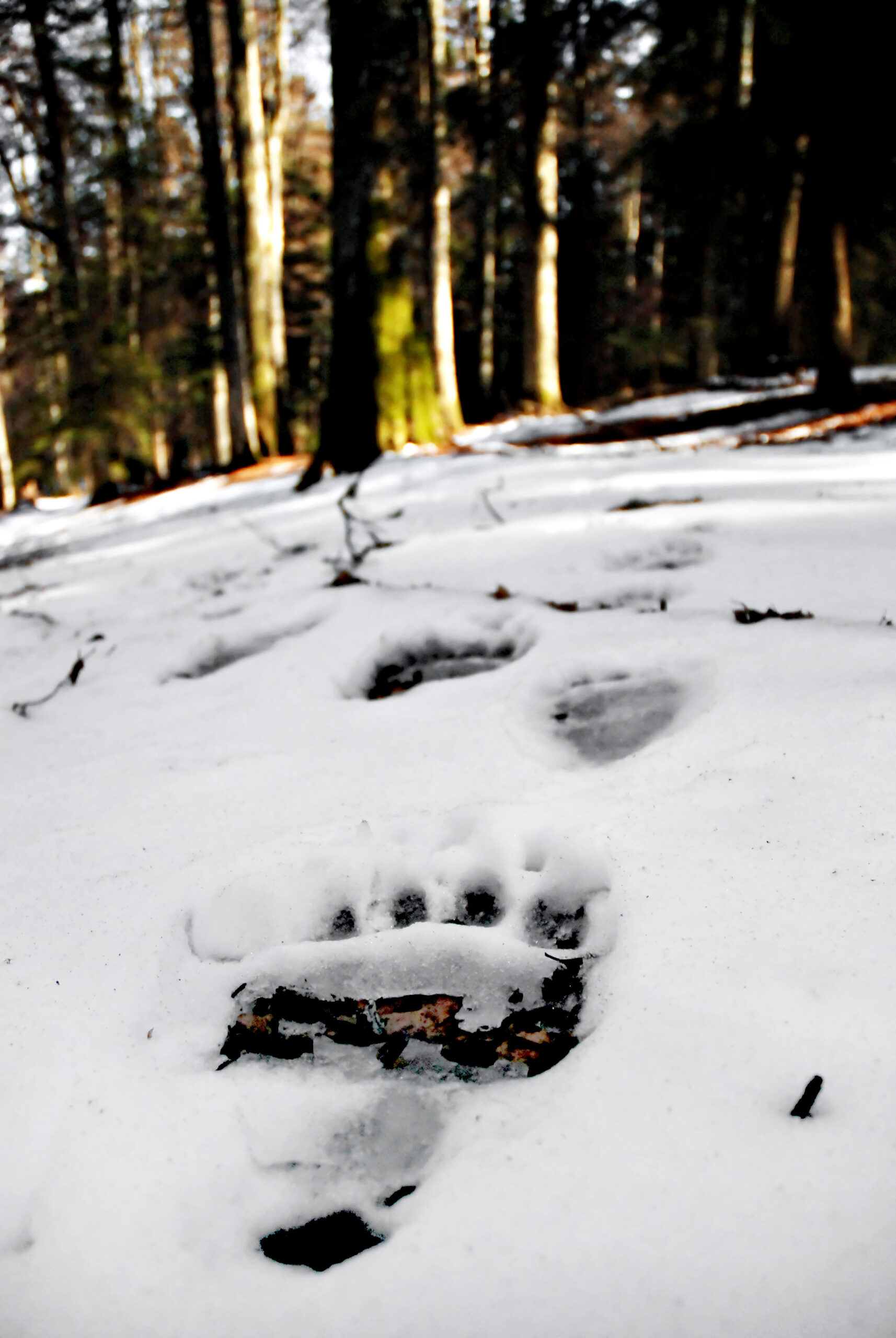The search for Bigfoot has been a topic of heated debate since the creature’s initial sighting in the late 1950s.
Over the years, numerous reports have been made of sightings of the elusive creature, but no undisputed evidence has been found to prove its existence.
While many believe that the creature remains hidden deep in the woods, there are still those who take a more active approach to the search for Bigfoot.
Physical tracking methods have been used for centuries to locate wildlife, and with the help of advances in technology, the search for Bigfoot has become more accessible than ever before.
Tracking Bigfoot involves more than just looking for footprints, however.
It involves careful observation of the environment, understanding the behavior of the creature, and knowing how to respond to any possible encounters.
In this article, we will explore what physical tracking methods are available to those wanting to search for Bigfoot, as well as take a look at some of the most successful methods used by Bigfoot trackers.
What is Physical Tracking?
Physical tracking is the practice of searching for and observing tracks or other signs of an animal’s presence in the wild.
It is a skill that has been used for centuries by hunters, trackers, and wildlife researchers to locate game animals (and people) and requires a great deal of patience, observation, and experience.
Physical tracking involves more than simply looking for footprints, however.
It involves observing the environment, understanding the behavior of the creature, and knowing how to respond to any possible encounters.
What Are the Different Physical Tracking Methods?
Tracking Bigfoot can be done using a variety of methods.
Some of the most popular methods include:
Observation

Observing and interpreting tracks is an important technique for hunting Bigfoot or other large, elusive animals.
When searching for Bigfoot tracks, it’s important to look for signs of the creature such as large footprints or other signs.
These tracks may be visible in soft soil, mud, or snow, and will probably be several times larger than a human footprint.
To interpret the tracks, you’ll need to pay attention to several factors.
First, look at the size and shape of the tracks.
Bigfoot is believed to have large, broad feet, so the tracks should be correspondingly large and broad.
The shape of the tracks may also be distinctive, with a deep heel and toes that are longer and more spread out than a human’s.
Next, consider the direction in which the animal was moving.
Look for signs such as the angle of the tracks, the direction of any scrapes or marks on the ground, and the orientation of any broken branches or disturbed vegetation.
This can help you determine the direction in which the creature was heading and potentially lead you to its current location.
Finally, try to determine how long ago the creature passed through the area.
Look for clues such as the degree of weathering on the tracks or the stage of decay of any nearby plants or animals that may have been disturbed by the creature.
This can give you an idea of how long it has been since the creature was in the area and whether it is still nearby.
By observing and interpreting tracks, you can gather valuable information about the movements and habits of Bigfoot, which can help you plan your search and increase your chances of a successful encounter with the creature.
Following a trail
Following a trail is a common method used by Bigfoot researchers and enthusiasts to try to find evidence or sightings of the creature.
There are several signs that may indicate the presence of Bigfoot, such as broken branches or disturbed vegetation, and by following these signs, it may be possible to find further evidence or sightings of the creature.
When looking for signs of Bigfoot, it is important to pay attention to the surroundings and look for any abnormalities or anomalies that may indicate the presence of the creature.
To follow a trail, it is important to pay attention to the direction in which the signs are pointing and to try to follow them as closely as possible.
This may involve walking through dense vegetation or rugged terrain, and it is important to be prepared for the physical challenges that this may present.
It is also important to pay attention to any additional signs that may appear as you follow the trail, such as fresh tracks or other disturbances, and to record any observations or findings in a field notebook for later analysis.
If you are able to follow a trail successfully, it is possible that you may come across further evidence or sightings of Bigfoot.
If you do encounter any of these signs, it is important to record your observations carefully and to try to take photographs or videos if possible.
It is also important to exercise caution and to avoid disturbing the area or disturbing the creature if you do see it, as Bigfoot is an elusive creature that is difficult to study and is not well understood.
Tracking dogs
Tracking dogs are a tool that some Bigfoot hunters use to help follow the scent of the creature.
These dogs are trained to use their sense of smell to locate and follow the scent of a specific individual or animal.
In the case of Bigfoot hunting, the tracking dogs are trained to follow the scent of the creature and to alert their handlers when they have found it.
There are several different breeds of dogs that are commonly used for tracking, including bloodhounds and Basset Hounds.
These breeds are known for their keen sense of smell and their ability to follow a scent over long distances and through difficult terrain.
In order to be effective at tracking Bigfoot, the dogs must be well-trained and able to focus on the task at hand, even in the presence of distractions.
Tracking dogs are typically used in conjunction with other methods of Bigfoot hunting, such as following a trail or conducting searches in specific areas.
They are often used to help locate the creature once it has been spotted or to follow its scent if it has fled the area.
Some Bigfoot hunters also use tracking dogs to search for physical evidence of the creature, such as tracks or scat, in order to confirm its presence in a particular location.
While tracking dogs can be a useful tool in the search for Bigfoot, they are not foolproof and there is some debate among researchers and enthusiasts about their effectiveness.
Some argue that the dogs may be able to locate the scent of the creature, but may not be able to distinguish it from other scents in the area.
Others argue that the dogs may be influenced by the expectations or beliefs of their handlers, and may be more likely to alert to the scent of the creature if they believe it is present.
Despite these limitations, tracking dogs remain a popular tool among some Bigfoot hunters and are used by some research organizations as well.
Camera Traps

Camera traps are a common tool used by Bigfoot researchers and enthusiasts to try to capture footage or images of the creature.
These cameras, often trail cameras, are designed to be triggered by motion and are typically set up in areas where Bigfoot is known to be active or where evidence of its presence has been found.
To use a camera trap, you will need to select a location where you believe Bigfoot may be present and set up the camera accordingly.
This may involve mounting the camera to a tree or other stable structure and positioning it in a way that allows it to capture a wide field of view.
It is important to make sure the camera is well-hidden and not easily visible, as Bigfoot is a shy and elusive creature that may be hesitant to approach if it senses that it is being watched.
Once the camera is set up, you will need to power it up and wait for it to capture any motion in the area.
This may take some time, as Bigfoot is not common and sightings of the creature are rare.
However, by reviewing the footage from the camera regularly, you increase your chances of not running out of memory and missing something important.
Camera traps can be a useful tool for Bigfoot researchers and enthusiasts, as they allow you to capture footage or images of the creature without having to be present at the location.
However, it is important to keep in mind that camera traps are not a magic bullet and may not always capture footage or images of the creature, even if it is present in the area.
It is also important to be aware of the limitations of camera traps and to consider other methods of searching for and studying Bigfoot in conjunction with this technique.
GPS technology
GPS technology can be a useful tool for Bigfoot researchers and enthusiasts who are trying to track the movements of the creature and record any sightings or encounters.
GPS, or Global Positioning System, is a network of satellites that provides precise location and time information to users on the ground.
By using GPS tracking devices, it is possible to follow the movements of Bigfoot by documenting physical evidence and recording the location of any sightings or encounters with the creature.
There are several types of GPS tracking devices that can be used for this purpose, including handheld GPS units and GPS tracking watches.
Handheld GPS units are portable devices that can be carried with you as you search for Bigfoot, and typically feature a large display and a variety of navigation and tracking features.
GPS tracking watches, on the other hand, are smaller and more lightweight devices that are worn on the wrist and are designed for use during outdoor activities.
To use GPS technology to track Bigfoot, you will need to equip yourself with a GPS tracking device and activate it as you begin your search.
As you follow a trail or search for the creature, the GPS device will record your location and movements, allowing you to track your progress and record any sightings or encounters with the creature.
You can then drop waypoints to mark areas of significance.
You can review this data later to see if there are any patterns or trends in the movements of Bigfoot or to see if there are any areas where the creature is more likely to be found.
Keep in mind, GPS technology is not foolproof and may not always provide accurate or reliable information.
Factors such as interference from buildings, tall trees, other obstructions, or the presence of dense vegetation, can affect the accuracy of GPS signals, and it is important to be aware of these limitations when using GPS technology to track Bigfoot.
Night vision and thermal equipment
Night vision and thermal equipment can be useful tools for Bigfoot researchers and enthusiasts who are conducting searches or expeditions at night.
These tools allow you to see in the dark and potentially spot Bigfoot even when it is difficult to see with the naked eye.
Night vision goggles are a type of device that amplifies available light, including moonlight and starlight, and allows you to see in low-light conditions.
There are several types of night vision goggles available on the market, ranging in price and features, and they can be useful for spotting Bigfoot during nighttime searches.
Thermal imaging equipment, on the other hand, uses heat signatures to detect the presence of objects or animals.
This type of equipment can be useful for spotting Bigfoot, as the creature is thought to have a higher body temperature than humans and may be more easily detected with thermal imaging equipment.
There are several types of thermal imaging cameras available on the market, and they can be useful for spotting Bigfoot during nighttime searches or for detecting the creature’s presence in dense vegetation or other areas where it may be difficult to see with the naked eye.
While night vision and thermal equipment can be useful tools for Bigfoot researchers and enthusiasts, they are typically expensive. This proves to be a barrier for a lot of people.
Drone technology

Drone technology is a “relatively” new tool that some Bigfoot hunters and researchers are using to search for and document sightings of the creature.
Drones, also known as unmanned aerial vehicles (UAVs), are small aircraft that are equipped with cameras and can be controlled remotely.
They are often used for a variety of purposes, including mapping, surveying, and monitoring wildlife.
To use drones for Bigfoot hunting, you will need to purchase or rent a drone and equip it with a camera.
There are a variety of drones available on the market, ranging in size, cost, and features.
It is important to choose a drone that is suitable for the purpose you have in mind and to ensure that it is equipped with a high-quality camera that is capable of capturing clear, detailed images.
Once you have your drone, you can use it to search for and document sightings of Bigfoot.
This may involve flying the drone over areas where the creature is known to be active or where evidence of its presence has been found and using the camera to capture footage or images of the creature.
You can also use the drone to conduct searches in specific areas or to follow a trail or other signs of the creature.
Drone technology can be a useful tool for Bigfoot researchers and enthusiasts, as it allows you to search for and document sightings of the creature from a distance, without having to be physically present at the location.
Footprint casting
Footprint casting is a technique used by Bigfoot researchers and enthusiasts to make a plaster cast of a footprint found in the wild.
This technique involves making a mold of the footprint using a material such as plaster and can be used to determine the size and shape of the creature that made the footprint, as well as the direction it was traveling.
To make a footprint cast, you will need to locate a footprint that you believe may be from Bigfoot.
This may involve following a trail or searching for signs of the creature’s presence, such as broken branches or disturbed vegetation.
Once you have located a footprint, you will need to carefully examine it to determine its size and shape and to see if there are any distinctive features that may be useful for identification.
Next, you will need to prepare the materials needed to make the cast.
This typically involves mixing a batch of plaster according to the instructions on the package and preparing a flat surface on which to pour the plaster.
You may also need to gather any additional materials needed for the casting process, such as a spatula or other tools to help spread the plaster.
To make the cast, you will need to carefully pour the plaster into the footprint, making sure to fill in all the details and contours of the print.
Once the plaster has hardened, you can carefully lift the cast out of the footprint and allow it to dry completely.
Once the cast is dry, you can carefully examine it to determine the size and shape of the creature that made the footprint, as well as the direction it was traveling.
Factors such as the age of the footprint or the condition of the plaster can affect the accuracy of the cast, and it is important to be aware of these limitations when using this technique to study Bigfoot.
Hair sampling
Hair sampling is a technique that can be used to collect hair samples from an area that is believed to be frequented by the creature.
Hair samples can be analyzed to determine the species of the creature that left them behind and can provide valuable information about the creature’s biology and behavior.
To collect hair samples for analysis, you will need to locate an area where you believe Bigfoot may be present and look for signs of the creature’s presence.
You may also want to set up camera traps or other monitoring equipment to help you detect its presence.
Once you have identified an area where you believe Bigfoot may be present, you can start looking for hair samples.
Hair samples can be found on branches, leaves, and other vegetation, and may be stuck to tree bark or other surfaces such as fence wire.
You can collect hair samples using a variety of tools, such as tweezers, and it is important to handle the samples carefully to avoid contaminating or damaging them.
Once you have collected your hair samples, you can send them to a laboratory for analysis.
There are several laboratories that specialize in analyzing hair samples from unknown species, and they can use a variety of techniques to determine the species of the creature that left the hair behind.
These techniques may include DNA analysis, microscopy, or other methods, and can help researchers to determine the identity of the creature and to learn more about its biology and behavior.
Hair sampling is a useful tool for Bigfoot researchers and enthusiasts, as it allows them to collect and analyze physical evidence of the creature’s presence.
Factors such as the age of the hair sample or the condition of the sample can affect the accuracy of the analysis, and it is important to be aware of these limitations when using this technique to study Bigfoot.
Conclusion
The search for Bigfoot can be daunting, and physical tracking methods are just one of many techniques used to search for the elusive creature.
However, physical tracking can be an invaluable tool for those wanting to search for Bigfoot, as it allows the tracker to observe their surroundings, spot signs of the creature’s presence, and respond to any potential encounters.
No matter which physical tracking methods are used, it is important to remember to be respectful of the environment and exercise caution when searching for the creature.
With a bit of patience and preparation, physical tracking can be an effective way of searching for Bigfoot.

